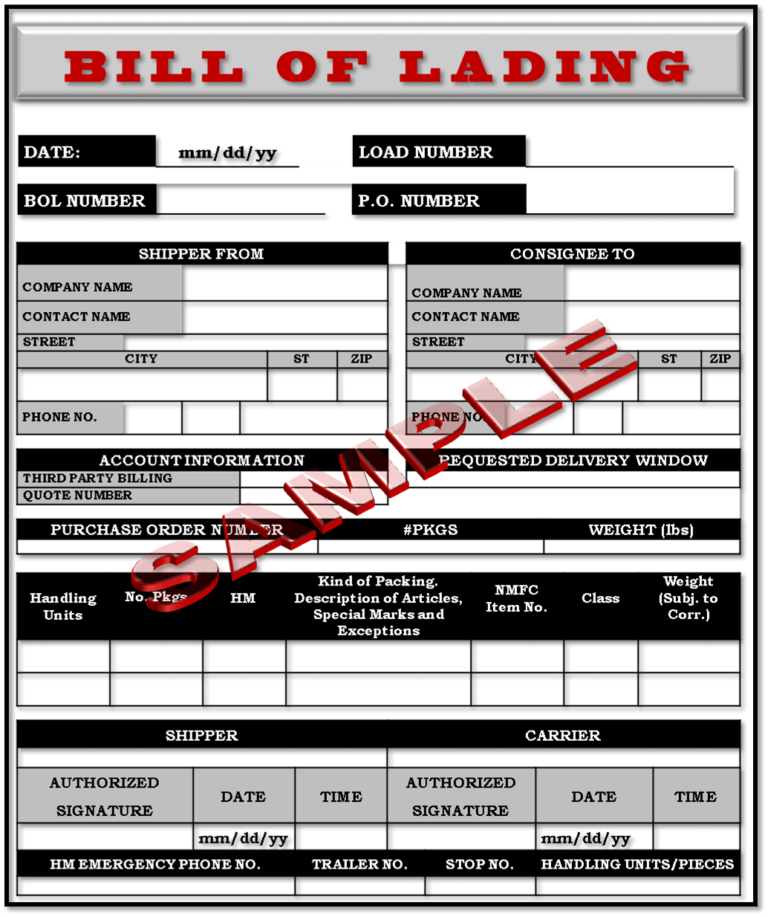© Copyrights 2015-2025 Freight-Specialist. All rights reserved. Designed & Developed By FD Studio.
A bill of lading is a very important document used in the transport of freight. After all, very relevant information about your shipment. Firstly, is the obvious section for the shipper and consignee. However, an often misunderstood section is contained within the body of the bill of lading. The section for the required freight class and NMFC is arguably the most important part. If this section is not filed out correctly it can lead to very unpleasant surprises.
A bill of lading must be used every single time a shipment is given to a transporter. And so, the carrier or freight broker provides this for you. Please note that a freight broker’s bill of lading may contain previously agreed upon information with the carrier. Most importantly, using the correct documentation keeps you from unnecessary corrections that can lead to delays or increased cost.
A BOL also serves as a legal document. For example, it guarantees or secures any debt or obligation by the shipper, consignee or carrier. As a result, a BOL is often required for payment. That is because it can serve as a proof of delivery.

If your shipment is classified as hazardous that is no issue. In fact, including this information on the BOL is a breeze. However, you must have the correct UN and class number for your cargo. This information can be found in the MSDS. For example, section 14 on the MSDS is contains all relevant information.
Typically the freight broker or carrier provides the BOL. However, shippers sometimes print their own. If you are working with a 3PL you must use the document that is provided to you.